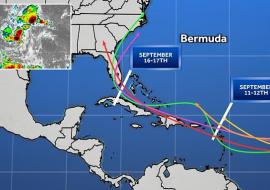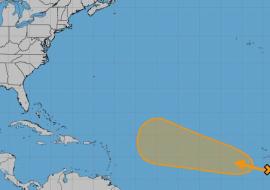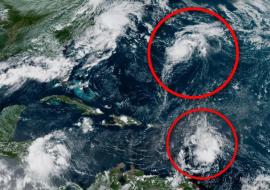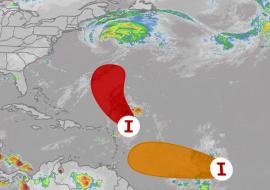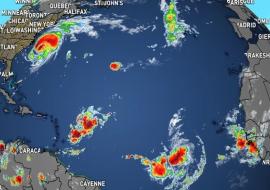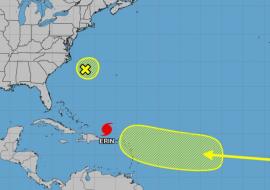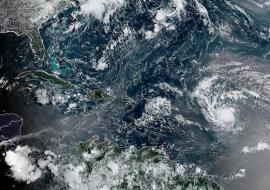Florence Takes Deadly Toll, Weakens to Tropical Depression
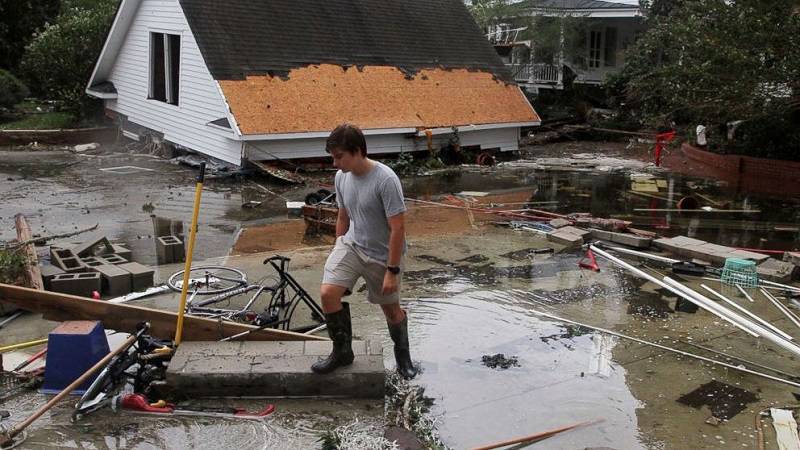
Florence weakened to a tropical depression Sunday, but that is cold comfort to residents in North Carolina who have seen over 2 feet of rain and are now battling major-river flooding and possible tornadoes.
Since the storm made landfall as a hurricane in North Carolina on Friday morning, it has been blamed for 16 deaths.
Officials said that 10 people died in North Carolina and six in South Carolina. The death toll included a person killed Sunday in a pickup truck crash near Gilbert, South Carolina, that occurred when the motorist drove through standing water on a roadway, according to the South Carolina Department of Public Safety.
Hundreds of people have been rescued by local authorities, Cajun Navy volunteers and the U.S. Coast Guard since Friday morning.
New evacuation orders were issued Sunday for a mile-long area along the Cape Fear and Little rivers in North Carolina. More than 700,000 households and businesses in the state were still without power as of Sunday afternoon, an estimated 15,000 people were in shelters, and 171 primary roads were closed including parts of two interstates, authorities said.
The state Highway Patrol advised people to stay off the roads, saying troopers responded to 48 collisions from Saturday night and into Sunday morning.
Adding to the threat of further flooding, a tornado watch is in effect until at least 5:30 p.m. on Sunday for the areas of Wilmington, Fayetteville, Myrtle Beach, Jacksonville, Oak Island, and Florence.
Catastrophic flooding unfolded Sunday morning in parts of North Carolina, exceeding flooding 19 years ago in Hurricane Floyd, the National Weather Service said.
One waterway, the Cape Fear River, rose 15 feet in just 24 hours from early Saturday to early Sunday. It reached flood stage in Fayetteville, North Carolina, where mandatory evacuation orders were issued Saturday.
Read More:
Hurricane Florence’s Outer Bands Start Pounding North Carolina
Check Out How Hurricane Florence Could Alter your Travel Plans
Hurricane Florence: State of Emergency Declared in Three Eastern U.S. States
FEMA, First Responders and Law Enforcement are working really hard on hurricane Florence. As the storm begins to finally recede, they will kick into an even higher gear. Very Professional!
The Lumber River, near Lumberton, North Carolina, rose to into major flood stage Sunday. It is expected to reach a level very near the record Hurricane Matthew set in 2016. Mandatory evacuations were issued for South Lumberton on Saturday.
Major river flooding is also expected on some rivers from southern Virginia to northern South Carolina.
The Northeast Cape Fear River, near Chinquapin, North Carolina, will rise above record flood levels set by Hurricane Floyd in 1999. This will cause devastating flooding across much of Onslow County with travel made impossible and many homes completely flooded.
The Neuse River, both near Goldsboro and Kinston, North Carolina, will reach major flood stage late Sunday and into Monday. The Waccamaw River, near Conway, South Carolina, will rise near record levels by the end of the week.
Florence has dropped a tremendous amount of rain in eastern North Carolina, with a widespread 20 to 30 inches reported already. Radar is estimating that some areas between Wilmington and New Bern, North Carolina, have received over 30 inches of rain.
Florence is now the third storm to set a tropical cyclone state rainfall record in just the last 12 months. Harvey dropped 60.58 inches of rain last year in Texas, setting the state’s new record. Lane just last month dropped 52.02 inches of rain in parts of Hawaii, breaking the state record. The 30.59 inches that have fallen in Swansboro sets a new record for North Carolina.
Florence also currently stands as the sixth-highest tropical cyclone rainfall total across the U.S. for records dating back to 1950.
Torrential rain is causing inland flooding with major roadways, including large portions of I-95, closed. An additional 6 to 10 inches of rain is still possible along the southeast border of North Carolina and South Carolina.
Life-threatening, catastrophic flash flooding is likely over the southern to central Appalachians from western North Carolina into western Virginia and eastern West Virginia. Torrential rain will cause flash flooding and increase the risk of landslides in the higher terrains.
Florence is still moving very slowly inland. The track shows Florence moving west through Sunday, and then gradually turning north by Monday. Florence will likely become a remnant low within 36 hours.
Even though Florence is weakening, it will still bring significant rainfall inland to the Appalachians before moving toward the Northeast on Tuesday. Totals could exceed 4 inches locally for inland New York and Massachusetts.
Source: ABC News







